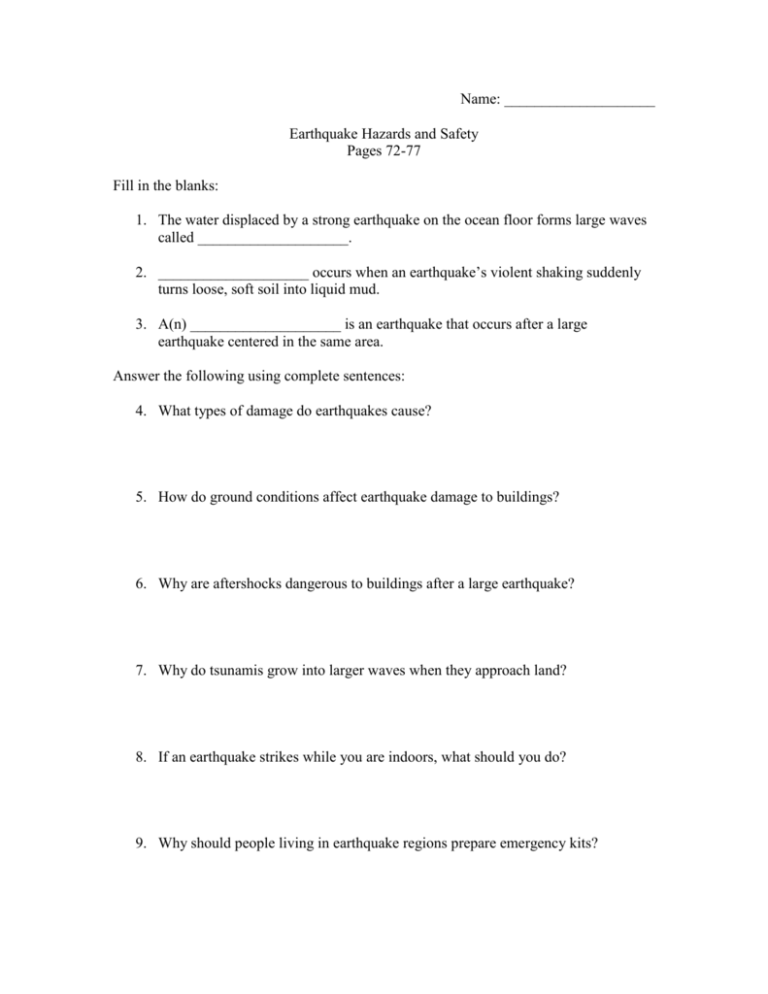Earthquake Hazards & Safety WS questions 1-14
advertisement

Name: ____________________ Earthquake Hazards and Safety Pages 72-77 Fill in the blanks: 1. The water displaced by a strong earthquake on the ocean floor forms large waves called ____________________. 2. ____________________ occurs when an earthquake’s violent shaking suddenly turns loose, soft soil into liquid mud. 3. A(n) ____________________ is an earthquake that occurs after a large earthquake centered in the same area. Answer the following using complete sentences: 4. What types of damage do earthquakes cause? 5. How do ground conditions affect earthquake damage to buildings? 6. Why are aftershocks dangerous to buildings after a large earthquake? 7. Why do tsunamis grow into larger waves when they approach land? 8. If an earthquake strikes while you are indoors, what should you do? 9. Why should people living in earthquake regions prepare emergency kits? 10. What kind of building design is shown in this figure? Explain how the design helps reduce earthquake damage. 11. Explain how liquefaction occurs and how it causes damage during an earthquake. 12. What can residents do to reduce the risk of earthquake damage to their homes? 13. You are a builder planning a housing development where earthquakes are likely. What types of land would you avoid for your development? Where would it be safe to build? 14. Find the “Earthquake Simulator” on my website and click on it. Read through the directions and pick different categories from the “ground”, “prevention”, and “magnitude” topics at the top. Once groups are picked, click on “begin quake”. Keep picking different variations until you design a system with the least damage to the building when the magnitude is a tremor, a quake, and a superquake. You should try 1520 different variations before you can accurately decide which is best. Write down the best ones below.







